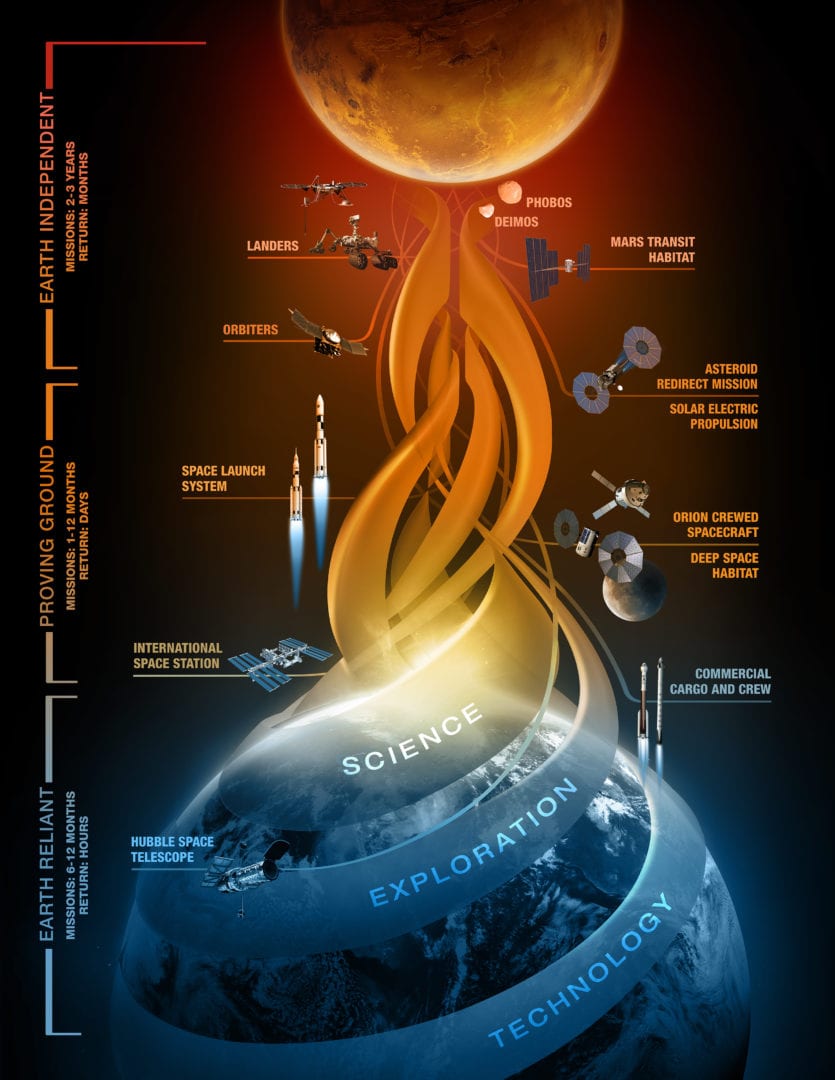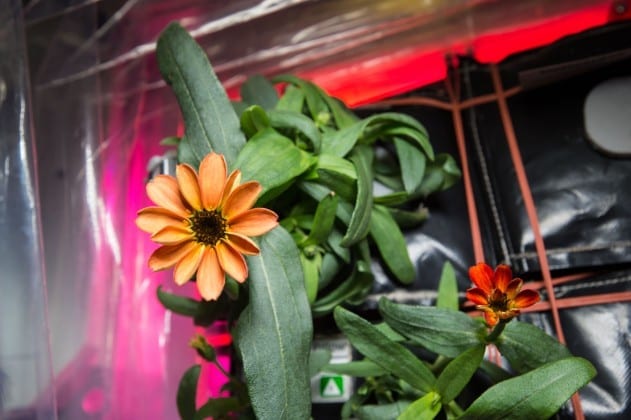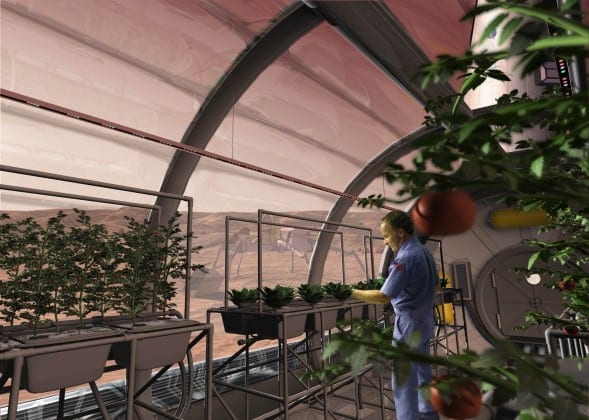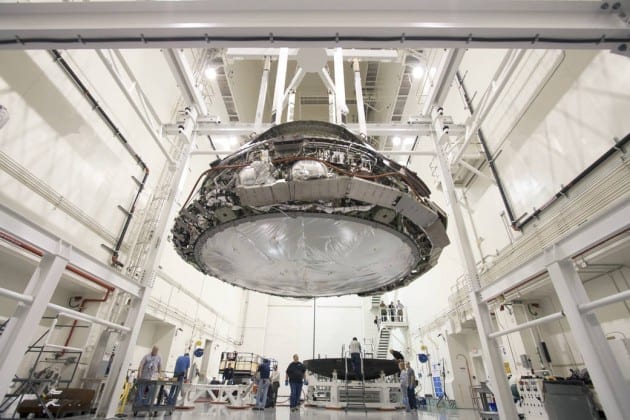Mars has held a special place in the hearts of humanity since antiquity. As far back as 1500 BCE astronomers have been tracking Mars across the night sky, and its allure has finally culminated in NASA’s ambitious plan to set foot on the red planet in the 2030s.
It seems like the stuff of science fiction, but humans are going to Mars in just a few decades. But why Mars? And why now?
These questions (and a few others concerning launch systems, interplanetary spacecraft, prolonged effects of zero gravity on the human body, and generally making sure that the astronauts who go to Mars come back again in once piece) is what brought NASA engineer and payload specialist, Dr Ravi Margasahayam, to Curtin to deliver a lecture about the NASA Mars Mission.
His answer was simple: “why not?”
“Why do we explore?” he asks. “Historically mankind has always explored. It’s one of two things we do best, one is to communicate, the other to travel. Our talent is to explore, not for the sake of exploration, but to improve our quality of life.
“Exploration really drives innovation. And as we innovate more and more, that technology enables exploration.” Dr Margasahayam describes it as a closed-loop system, where the success of one affects of the other.
“If you look in your lifetime, my lifetime, the most significant changes happened within the last 100 years. Before that we couldn’t even fly. Now we’ve sent probes like Voyager I beyond the Solar System, we’ve put footprints on the Moon; we are living and working in space on the International Space Station [ISS]. Soon we’ll be able to put boot-prints on Mars.”
56 million kilometres to go
Space is big. Mind bogglingly big, and so is the distance between Earth and Mars. To put just how far away Mars is into perspective: if Earth were a 23-millimetre marble and Mars a 12-millimetre ball bearing, they would be – at their closest – 102 metres part. That’s about the length of a soccer pitch. And to get there we’re talking about kicking a spacecraft smaller than a grain of sand across that space and into a goal only 12 millimetres in diameter.
If that isn’t an exercise in precision, then I don’t know what is.
Earth and Mars’ elliptical orbits mean the distance between the two planets varies, but even at their closest, they are tens of millions of kilometres apart. In 2003, Mars and Earth were only 56 million kilometres apart – the closest they’d been in 50,000 years – while in 2010 this figure leapt up to 99.3 million. In 2018 it will drop back down to 57.5 million.
But getting to Mars is a lot more complicated than waiting for Mars and Earth to be at their closest and then launching a rocket directly at it. We’d miss; Mars would have moved in the time it took the vessel to get there. There’s also the Sun’s gravity to contend with; it causes flight trajectories between Earth and Mars to curve. To get around this, NASA uses an orbital transfer, which sets the flight trajectory as an elliptical orbit. In layman’s terms, it sets a spacecraft’s flight path in an arc so that it gradually leaves Earth’s orbit to meet Mars.
[youtube]https://www.youtube.com/watch?v=Js0Io4qJT4c[/youtube]
This journey can take between 150 to 300 days depending on the how intense the orbital transfer’s arc is.
So getting to Mars is hard. Of the 43 missions NASA has launched to the red planet, less than half have succeeded. The difficulty in getting spacecraft to Mars has earned it the nickname the Galactic Ghoul. It is why it is so impressive that NASA’s first success in sending a probe to the red planet was as early as 1964, five years before the Apollo 11 Moon landing.
Surviving the journey
Currently NASA is in the first phase, the Earth Reliant phase, of its three-part plan to reach Mars. The Earth Reliant phase is focused on conducting space exploration research aboard the International Space Station until 2024. Phases two and three, Proving Ground and Earth Independent, will see new launch systems being tested from 2018 and exploration missions, such as the asteroid redirect mission planned for 2020, begin to grow longer as they extend beyond the orbit of Earth.

[youtube]https://www.youtube.com/watch?v=3UkEximY6lc[/youtube]
[youtube]https://www.youtube.com/watch?v=F6xJ_81TzBg[/youtube]
As the co-chair of the ISS Payload and Ground Safety Panel, Dr Margasahayam is heavily involved with supporting the ISS and ensuring that payloads full of food, water, equipment and supplies arrive at the station up to four times a year.
“The safety of the astronauts in space depends on the quality of work I do on Earth,” Dr Margasahayam explains. “Suppose I send some liquid, I have to make sure it won’t contaminate the station.”
Along with liquids and their potential to leak, there are lasers, sharp edges, fire and chemical hazards, explosion risks – and, in the next payload, about 70 mice to consider too.
“The mice device and its experiment is from JAXA, Japan’s space agency,” Dr Margasahayam says. “I have to make sure they can’t escape and that their food, water and waste is contained.”
A large part of his work involves sending experiments up to the ISS, which will further develop knowledge for not just for getting to Mars, but also for surviving there.
“Currently, I’m supporting about 1,700 experiments from 60 different countries,” Dr Margasahayam says.
Missions such as astronauts Scott Kelly and Mikhail Kornienk’s year in space also play a vital role in not only conducting research on the ISS, but being the subject of research themselves – particularly with how the human body responds to long periods of weightlessness and other hazards, such as space radiation.
“During their record-setting mission, nearly 400 investigations were conducted that advance NASA’s mission to reach new heights, reveal the unknown, and benefit all of humanity,” NASA reported in March.
“Kelly and Kornienko participated in dozens of studies to provide new insights into how the human body adjusts to weightlessness, isolation, radiation and the stress of long-duration spaceflight, which will include the Journey to Mars.”


More than rocket science
Just as the Apollo program spurred science, engineering and technology forward several giant steps through the 60s, 70s and 80s, the Mars Mission is set to take our knowledge forward yet again. Where the Apollo program was crucial to the development of flight navigation, machine automation, and small-scale integration circuits (the predecessor of modern computer chips, which are the cornerstones of all things digital), NASA’s Mars Mission is leading to a new wave of developments in science, technology, engineering, biology and medicine.
“On the ISS and in going to Mars, there are a lot of technological challenges,” says Dr Margasahayam. “These challenges are being met by existing technology as well as developing technology.”
But, the astronauts headed to Mars won’t be the only ones to reap the benefits either. Us Earthlings will too. In fact, we already are.
Take nanofiber filters. Originally designed to purify water in space, in particular to extract water from buried glaciers on Mars, they are now used in remote villages as well as in water bottles that let hikers and adventurers stay safely hydrated using streams and lakes.
A DNA/RNA tool to diagnose and treat diseases in astronauts on years-long missions is pushing the medical field to new heights. According to NASA, the tool, called an X-Aptamer, could also be used to carry and attach a chemotherapy drug to a tumour, sparing other parts of the body from receiving the treatment.
For the brewers among us, new technology to convert Mars’ air (which is 96 per cent carbon dioxide) into oxygen now offers a way to cut the cost of carbonating beer.
These have all been made possible thanks to spinoffs – the commercial venture of a particular technology. In the past NASA spinoffs have led to the microwave oven landing in our homes, along with home insulation, memory foam, the ear thermostat, Kevlar and Velcro. Even something as simple as an engineering checklist has its origins in space exploration.
“Going to Mars is a project in serendipity, we don’t know where it’s going to lead,” says Arun D’Souza, principal of X21e and orchestrator of Dr Margasahayam’s visit to Curtin. “The engineers in my generation don’t know what the next generation’s going to be doing when the challenges of getting to Mars are put in front of them.
“There will be so many spinoffs that we don’t know about. It may be ideas in people’s minds, it may not even be an idea yet.”
In 2015 alone, NASA featured 44 spinoff ventures in its annual Spinoff publication. Since 1976 Spinoff has, according to NASA, been published every year since, sharing the stories of nearly 2,000 products and services that began as, or have benefited from, NASA technology.
Ready for tomorrow?
Getting to Mars is not just a job for today’s engineers and scientists. 2030 might seem like a long way off, but in four year’s time – the time it takes to do an undergraduate engineering or science degree – the Orion spacecraft that will take crews to Mars will be tried and tested; a new Space Launch System (SLS) – the most powerful ever built – will be ready to propel the Orion and its crew into deep space; and NASA’s 2020 asteroid redirect mission to capture a boulder from a passing asteroid will be underway.

The 2020s and 2030s are set to be some of the most exciting times for space exploration as NASA’s proving ground missions take humanity further from Earth than ever before. But, their success hinges on the people on the ground developing the technology in the first place – the mathematicians, the physicists, the scientists and the engineers.
“One of the curiosities of humankind is that we want to find out where we came from and where we are going,” says Dr Margasahayam. “Mars is a destination. We always like challenges; we like to explore. It’s in our DNA.”
To quote astronaut Buzz Aldrin: “Mars is there, waiting to be reached.”
And tomorrow’s students will be the ones to take us there.



